This entry includes a walking tour! Take the tour.
Introduction
Text-to-speech Audio
The Usonia Historic District is a neighborhood community in Pleasantville, NY, populated entirely by nature-inspired, Contemporary (also referred to as Mid-century Modern) homes. Almost all the houses were designed or approved by renowned architect Frank Lloyd Wright or by his former students and acolytes. The district encompasses ninety-seven acres and includes forty-six contributing features, built between 1949 and 1964. The original site plan for the Usonia community was designed by Wright himself and later slightly revised by David Henken with Wright’s approval. The majority of the homes in the Usonia Historic District rest on concrete slabs and were designed with massive masonry chimneys, natural brick, flat roofs with overhanging eaves, radiant heating, and open floor plans with separated bedroom wings. Originally a cooperative community with a shared mortgage among the residents, all of the building lots were transferred in 1955 from cooperative to private ownership. The Usonia Historic District was added to the National Register of Historic Places in 2012.
Images
Frank Lloyd Wright in a Usonia Home
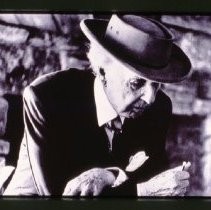
Circular home lots of Usonia, New York per the original master plan

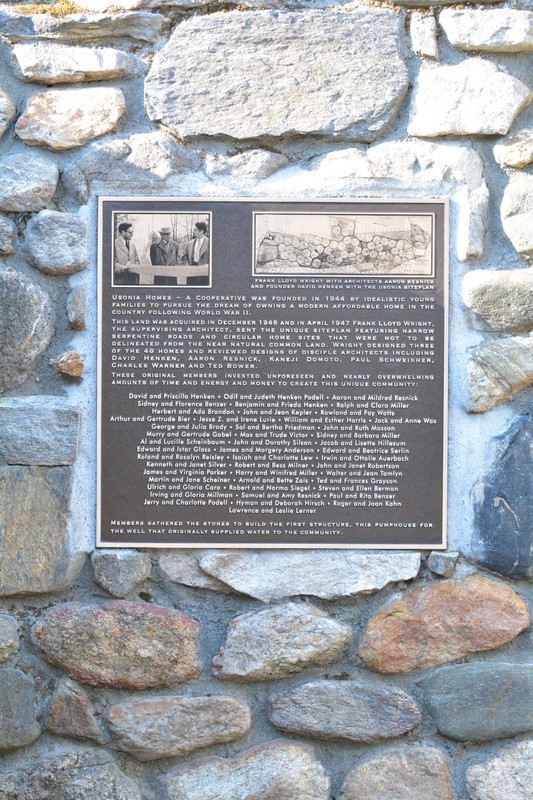
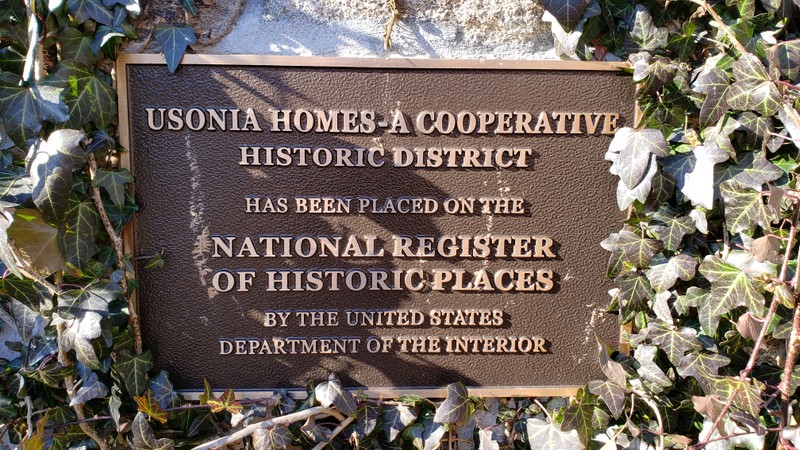
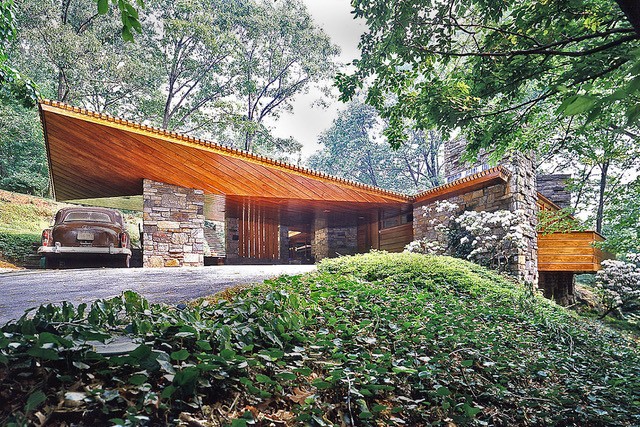
Friedman House from road
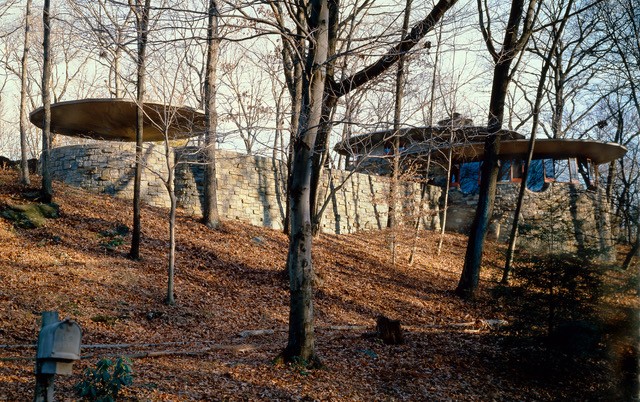
Usonia house
.jpg)
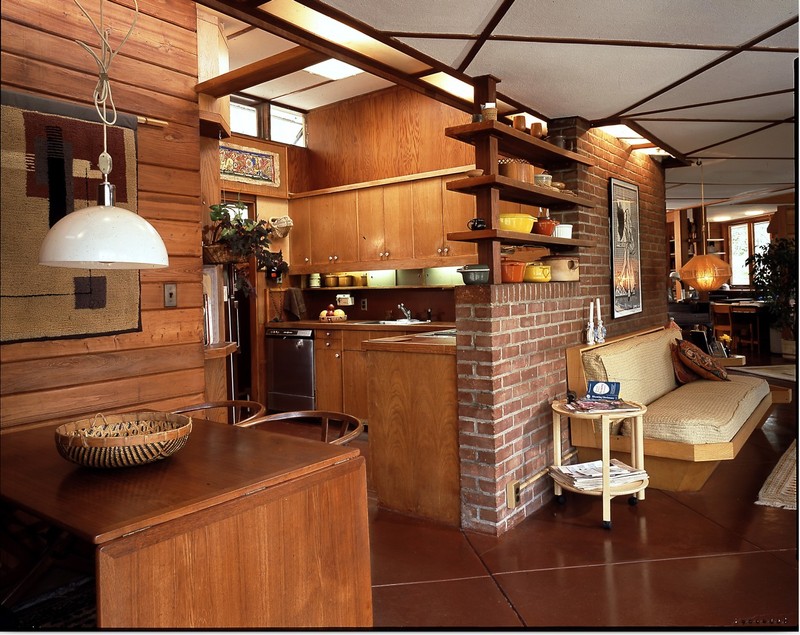
Backstory and Context
Text-to-speech Audio
Inspired by an exhibit of Frank Lloyd Wright’s architecture at New York City’s Museum of Modern Art in 1940, David Henken, the principal founder of the Usonia community of homes in Pleasantville, NY, traveled to Taliesin in Wisconsin to apprentice with Wright and commission him to develop a site plan for a cooperative community of homes in Westchester County, NY.
The Pleasantville community chose the name “USONIA HOMES—A COOPERATIVE, INC” as an acronym for “United States of North America” with an “I” added in to make it sound better. It was a term Frank Lloyd Wright had started using in the 1930s for its relation to his architectural ideas and designs.
The cooperative was modeled after the Rochdale-style of cooperatives, meaning that homes were built and owned by the cooperative. Members received 99-year renewable leases, and paid membership fees and monthly installments for building expenses. Thousands of individuals originally expressed interest in joining the Usonia cooperative for the opportunity to work with or to be associated with Frank Lloyd Wright, the affordability of the designer homes, and the idealist spirit and intent of the community.
By the end of 1944, work began with a core group of thirteen participants and would grow to ultimately be a community of forty-seven homesites. In 1955, due to unanticipated high building costs, eleven of the intended homesites remained unsold. As a result, the cooperative reluctantly decided to transfer ownership to the individual homesites, with all of them still subject to the community’s restrictive covenants. The cooperative continued ownership of forty acres of the community land that included natural areas, roads, the water system, and later the tennis courts and a swimming pool.
Wright himself designed five of the homes for Pleasantville’s Usonia, three of which were built. Forty of the other forty-seven homes were completed by architects who had trained with Wright or were associated with him as students or acolytes, including Aaron Resnick, Kaneji Domoto, Paul Schweiker, and Winston Elting. Many of the original Usonia residents stayed in their custom homes for the rest of their lives. During the first forty years of Usonia’s existence, only twelve of the forty-seven houses changed hands and of those, half went to next-generation residents. In more recent years, the community has seen more turnover.
Decades of historic preservation efforts, guided by the directives in Usonia’s restrictive covenants, have ensured that the architectural intentions of Usonia’s original member‑owners. These covenants remain in effect to the present day, specifying that any architectural building changes shall be sympathetic to the original organic/Usonian design. As a result, almost all of the homes in Usonia have retained their original exteriors, including the natural brick or stained cypress siding, the large glass windows, flat roofs with overhanging eaves, and covered carports. Interiors have evolved; almost all of the kitchens and many of the bathrooms have been updated or enlarged to meet the needs of new residents. Other interior elements, which are not protected or restricted by Usonia’s guiding bylaws, have also seen modernization but remain largely authentic, including the massive chimneys and exposed wood beams. In addition, the majority of houses have been expanded from their original ca.1500 sf size.
Sources
- “A Visit to the Roland Reisley House in Usonia New York.” The Weekly Wright-Up. Aug 1, 2013. Accessed Oct 5, 2021. https://wright-up.blogspot.com/2013/08/a-visit-to-roland-reisley-house-in.html
- Dougherty, James. “Broadacre City: Frank Lloyd Wright’s Utopia.” The Centennial Review 25, no. 3 (1981): 239–56. http://www.jstor.org/stable/23739336.
- Furio, Joanne. “Utopia at Usonia.” Journal News, Feb 9, 2002.
- Giacobbe, Alyssa. “This is the Best-Designed Small Town in the U.S.: New York’s Secret Stash of Midcentury-Modern Design.” Architectural Digest. March 25, 2017. https://www.architecturaldigest.com/story/usonia-ny-best-designed-small-town-in-the-us
- Gilinsky, Rhoda M. “At Home with Wright-Built Houses.” New York Times, Nov 22, 1987.
- Giovannini, Joseph. “Design Notebook: Westchester Community Inspired by Wright.” New York Times, Feb 14, 1985.
- McAlester, Virginia Savage. A Field Guide to American Houses (Revised). Knopf Doubleday. 2015.
- Ramaswamy, Swapna Venugopal. “Usonia Homes Blend with Land.” Journal News. May 5, 2007.
- Reisley, Roland. Usonia, New York: Building a Community with Frank Lloyd Wright. Princeton Architectural Press. 2003.
- Trufelman, Avery. “Usonia the Beautiful (Episode 247).” 99% Invisible. Feb 14, 2017. https://99percentinvisible.org/episode/usonia-the-beautiful/
- “Usonia Historic District #12000600.” National Register of Historic Places. United States Department of the Interior/National Park Service. Sept 5, 2012. https://catalog.archives.gov/id/75323279
- Zimmer, William. “An Absorbing Introduction to Wright’s Usonia.” New York Times, Feb 3, 1985.
Westchester County Historical Society
https://99percentinvisible.org/app/uploads/2017/02/Untitled-1.jpg
Will Jhun for WCHS
Will Jhun for WCHS
Roland Reisley
Roland Reisley
Westchester County Historical Society
